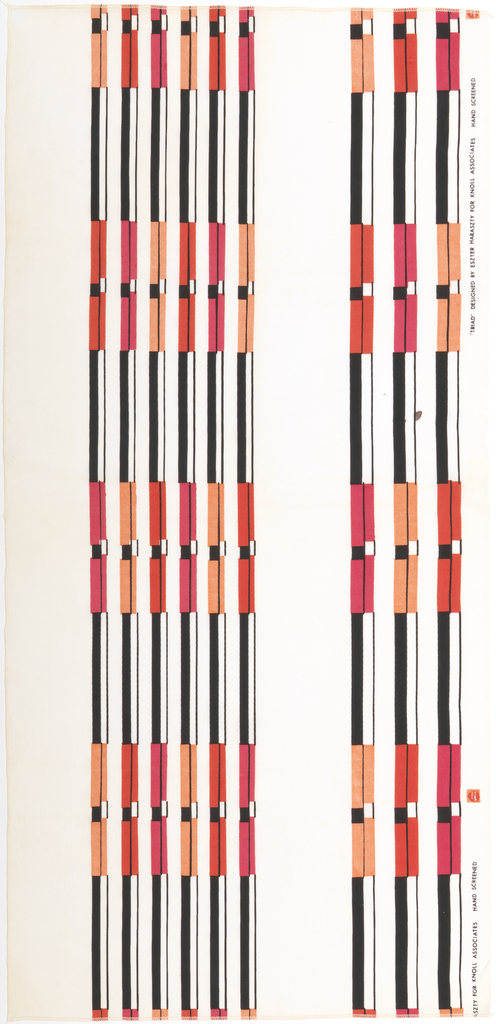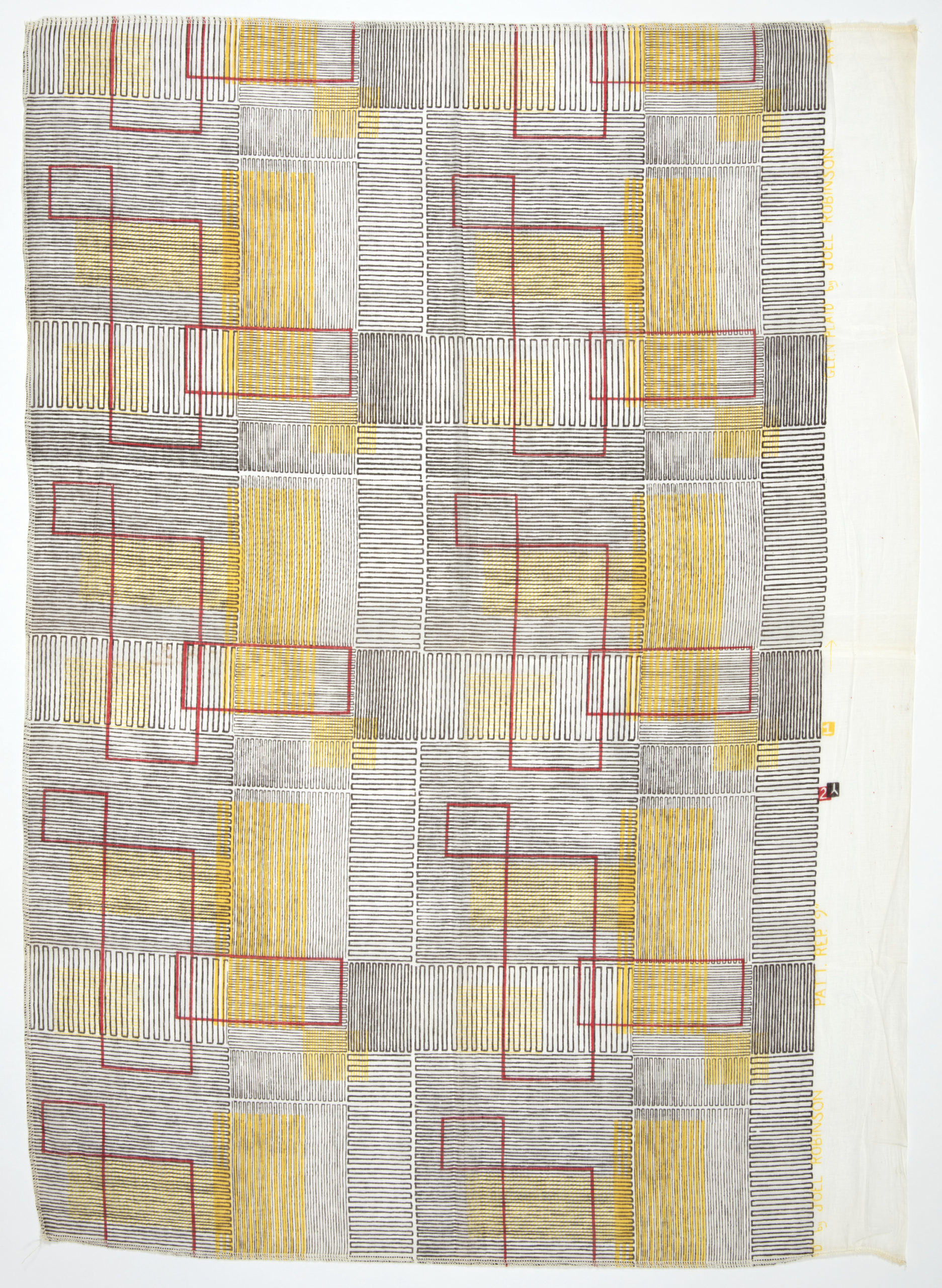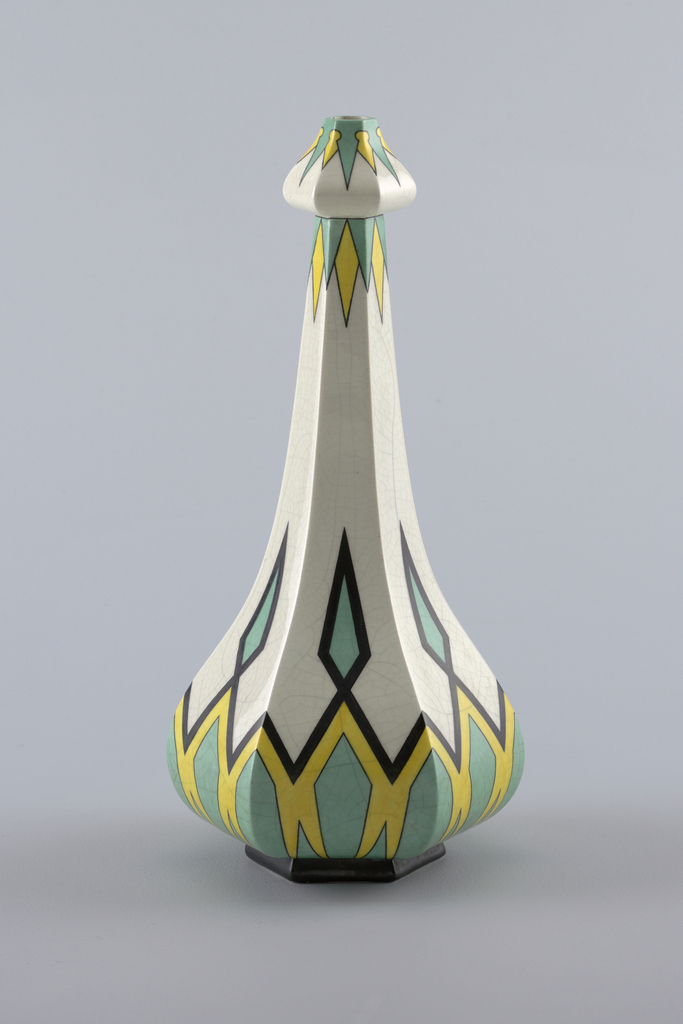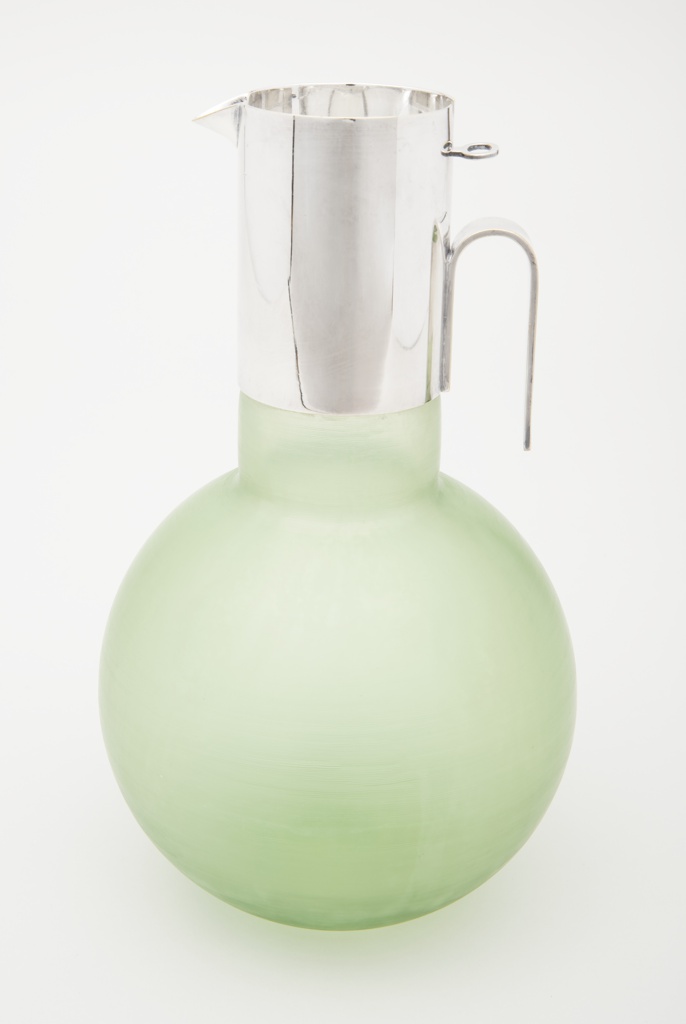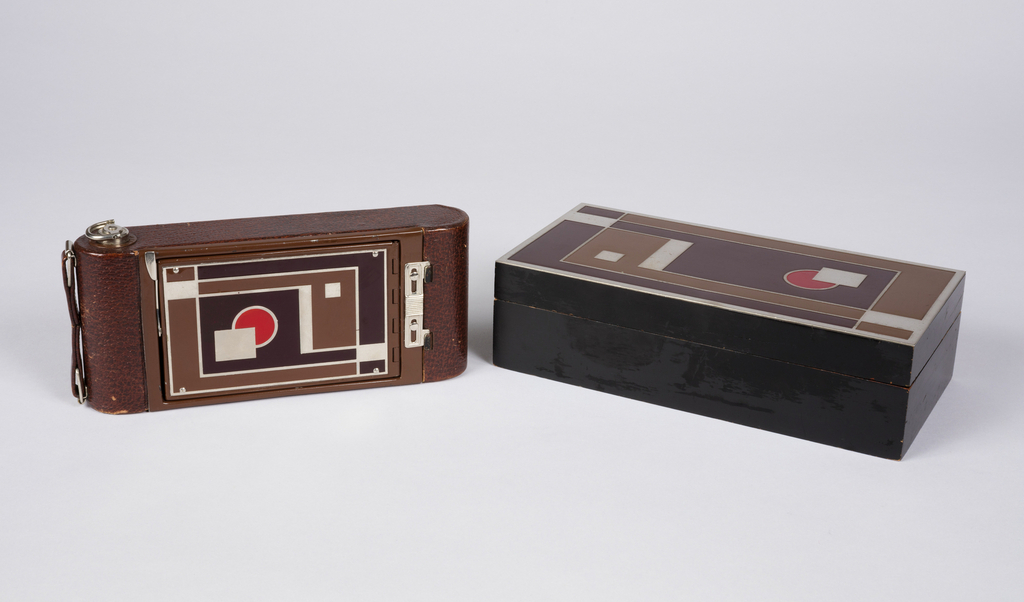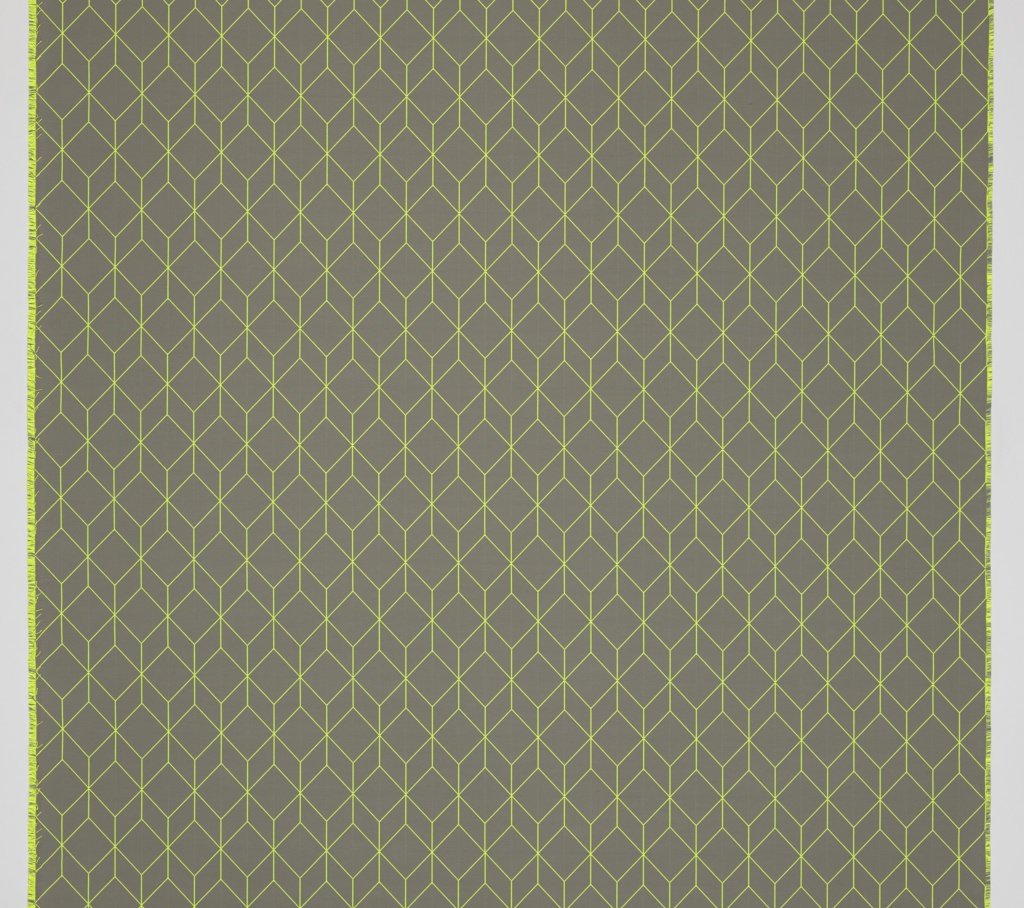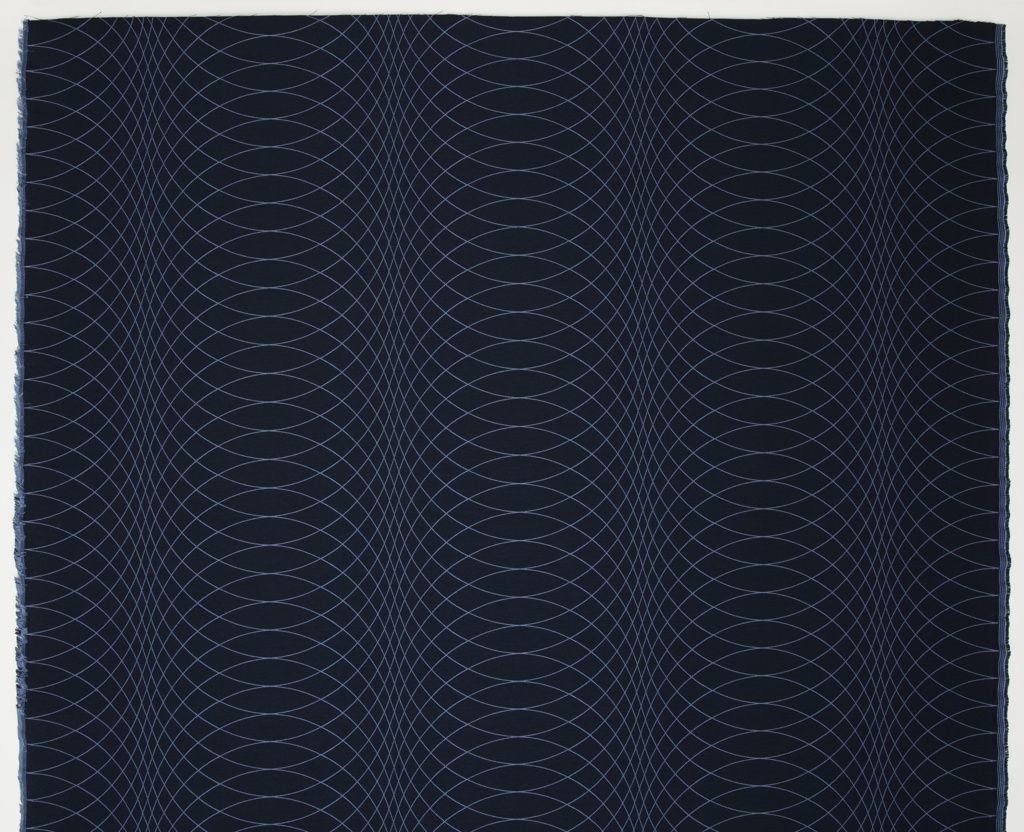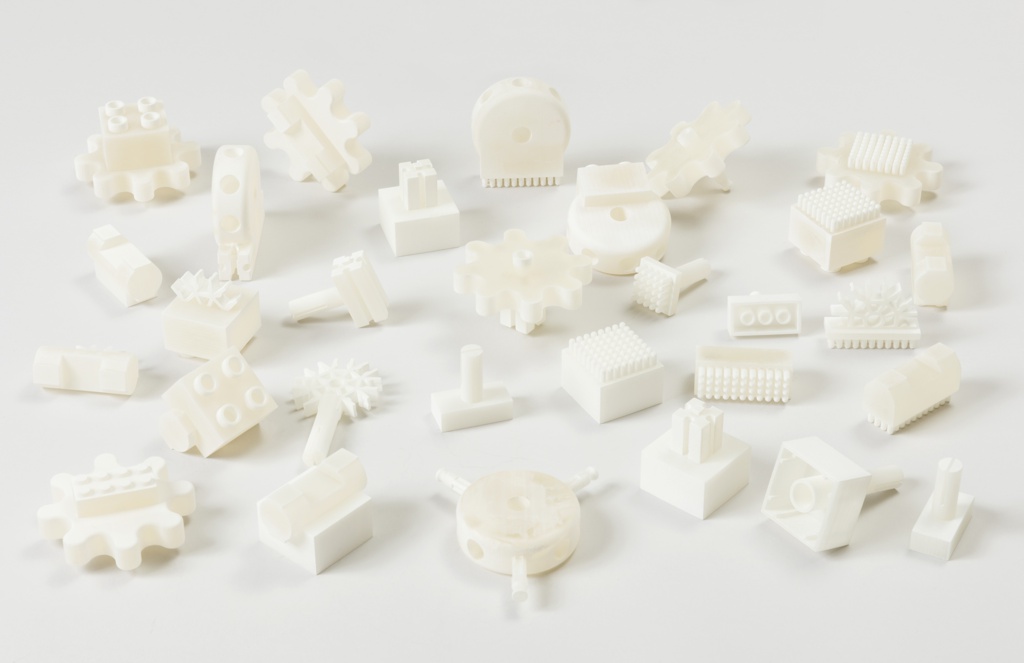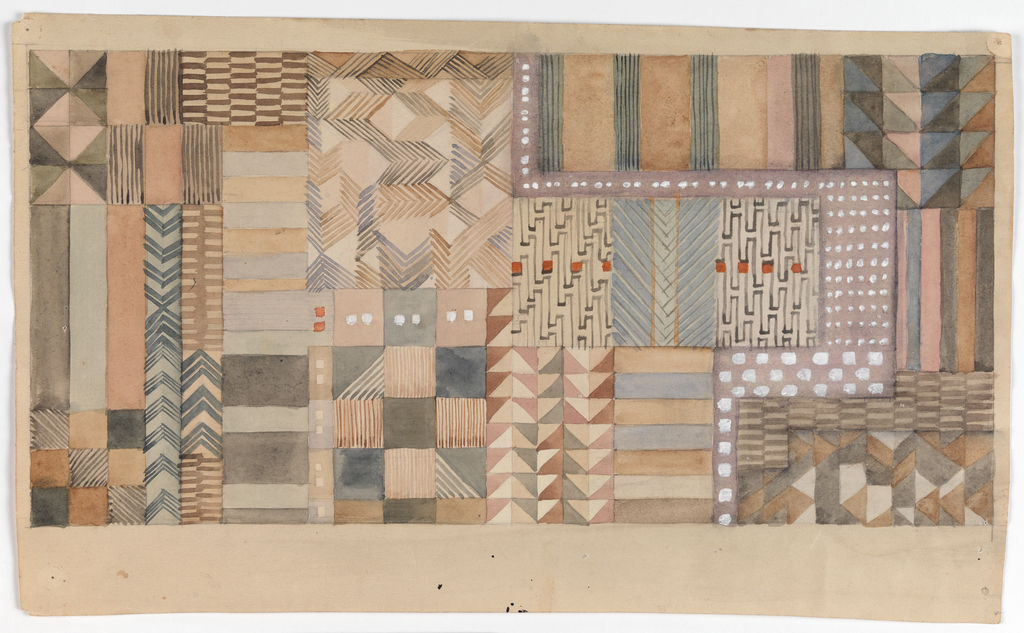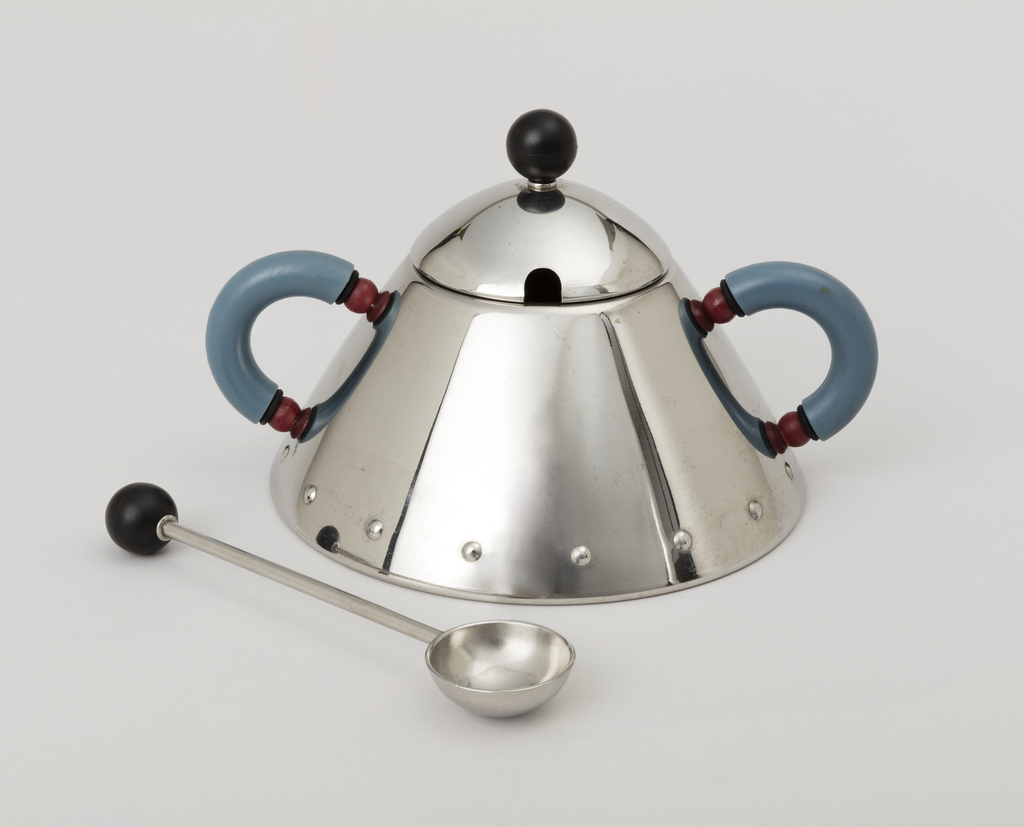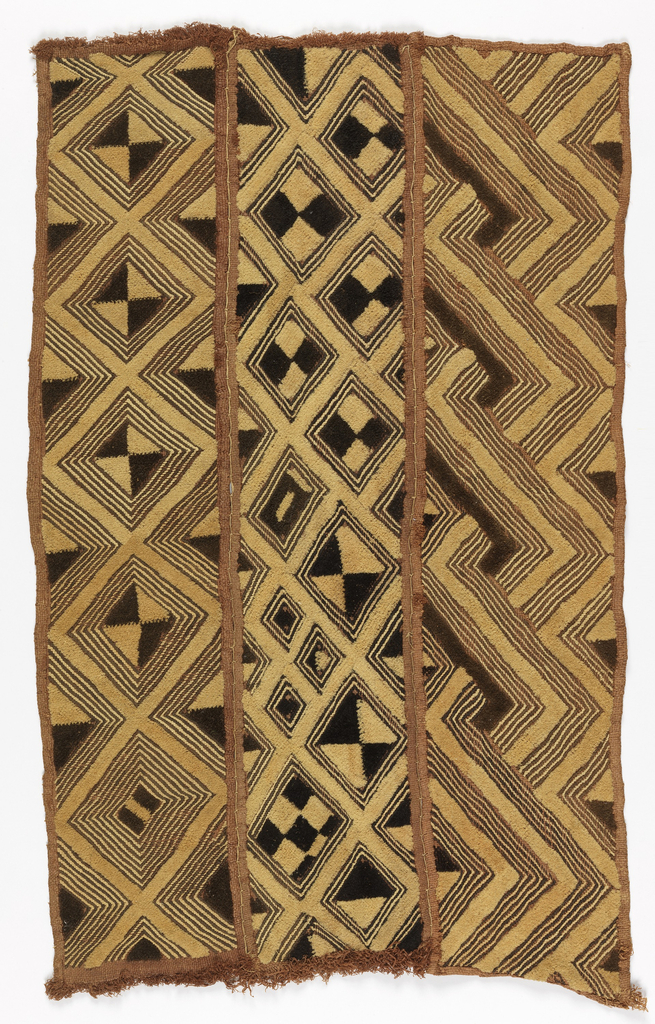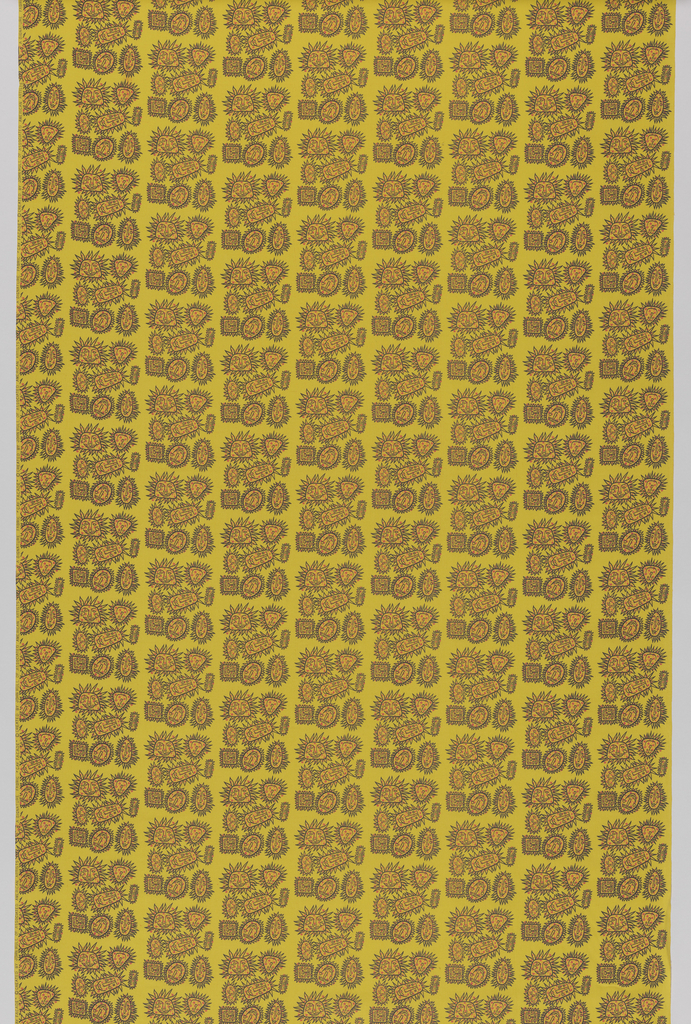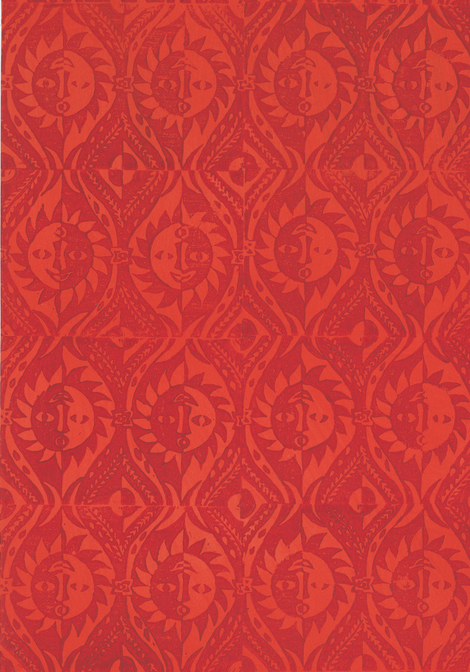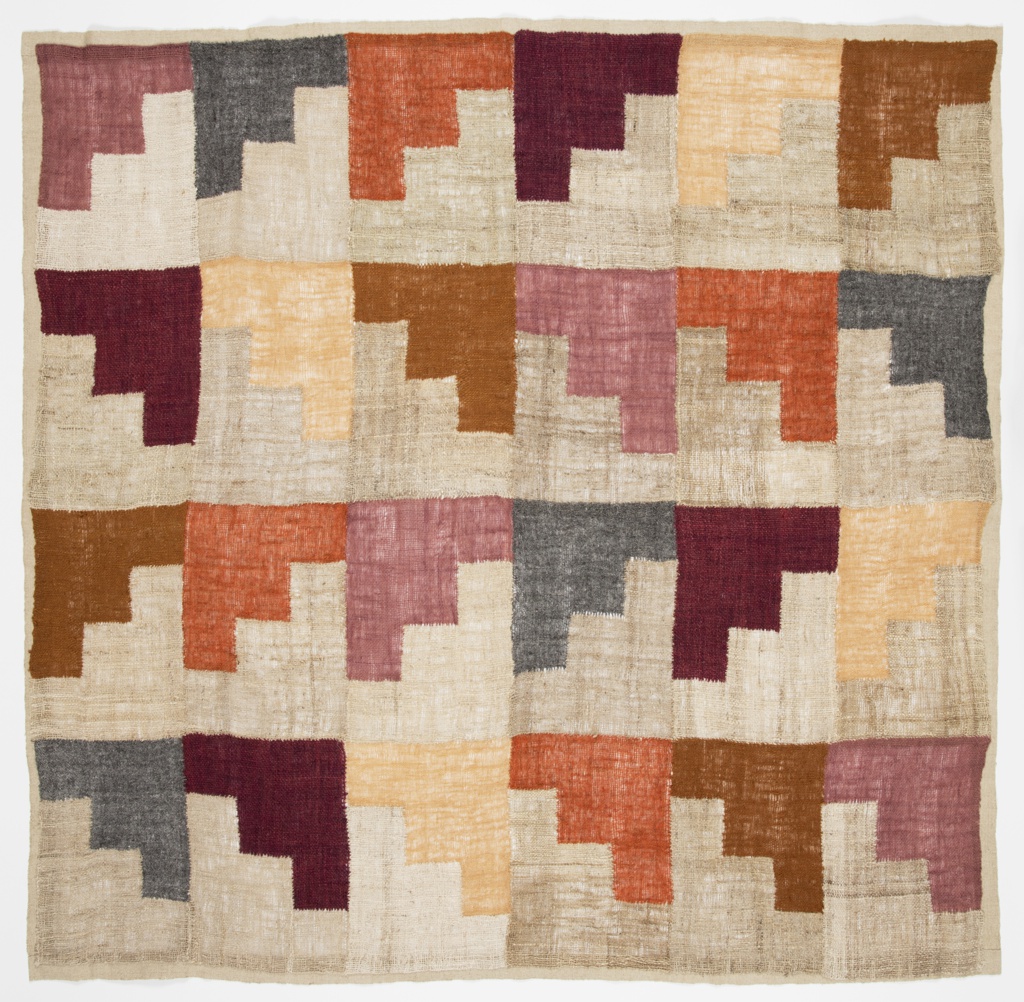In celebration of National Design Month, October’s Object of the Week posts honor past National Design Award winners. In 2011, Knoll won a National Design Award for Corporate and Institutional Achievement. The company, known for fostering many talented international designers over the decades, is represented by more than 170 objects in Cooper Hewitt’s permanent collection. ...
“One of the most promising newcomers in the highly competitive field of fabric design is a youthful, multi-talented New Yorker, Joel Robinson,” Ebony magazine proclaimed in 1952.[1] Robinson’s printed fabric Ovals had been shown that winter in The Museum of Modern Art’s 1951 Good Design exhibition, making him the first African American to be included...
The remarkably graphic, geometric pattern of bright yellow and sea-green crystalline forms that map the surface of this elongated, arrow-like vase appear definitively modern. The origin of this decoration, though, is decidedly not. This vase was made by Arabia, the principal industrial pottery in Finland during the opening decade and a half of the twentieth...
Designer Massimo Vignelli was known for the sense of sophistication and refinement he brought to the product, graphic, and furniture design that he produced first in Italy, and later in the U.S. working with his wife Lella, also a designer. While a student at the School of Architecture in Venice, Vignelli learned about glass from architect and glass...
Walter Dorwin Teague was a well-established industrial designer by 1928, when the Eastman Kodak Company, engaged him to modernize their line of cameras. Kodak sought Teague based on recommendations by curators from the Metropolitan Museum of Art. Having no prior experience in camera design, Teague undertook the assignment after Kodak agreed that he could spend...
Along with Bright Grid and Bright Angle, Bright Cube is the second series of products designed by Dutch designers, Stefan Scholten (b. 1972) and Carole Baijings (b. 1973) of Scholten & Baijings in collaboration with Maharam. Their first, Blocks and Grid, is in Cooper Hewitt’s collection. Scholten & Baijings’s work is characterized by minimal forms...
Among Sir Paul Smith’s upholstery fabrics for Maharam, the dominant motifs are bolder and quirkier versions of classic menswear patterns such as stripes, plaid, herringbone, and houndstooth check. In a significant departure, the designer has based his latest on an iconic architectural feature. Named for the central London street address of the flagship Paul Smith...
This week’s posts feature case studies from Cooper Hewitt’s Digital Collections Management Project, a conservation survey of born-digital and hybrid objects in the permanent collection. The two-year project was coordinated by an in-house team of conservators, curators, and registrar, and was conducted by digital conservation specialist Cass Fino-Radin and his team at Small Data Industries....
In celebration of Women’s History Month, March Object of the Day posts highlight women designers in the collection. Adelgunde “Gunta” Stölzl was one of the most successful women designers connected with the Bauhaus, the school founded in 1919 by the German architect Walter Gropius. The mission of the Bauhaus was to integrate art, design, and craft...
This stainless steel sugar bowl designed by architect Michael Graves for Italian metalwork manufacturer Alessi S.p.A. is part of a line of kitchen and table wares that have found their way into homes around the world. Graves’s model 9093 whistling kettle of 1985 was the initial object in the range. The conical shape–with its polished...
The sophisticated visual culture of the Kuba kingdom has been noted since the first explorers visited the region. Abstract geometric patterning is deployed across all media, from scarification of the skin to textiles, basketry, pottery, and even the woven walls of noble dwellings. The devices of color alternation, contrast of surface texture, and play of...
Émile-Jacques Ruhlmann, the designer of this commode, produced a number of luxury furniture pieces throughout the 1920s and early 1930s that represent the pinnacle of French Art Deco design. His work often imbued historical cabinetmaking techniques and forms with a vibrant and modern spirit. Though he achieved notoriety for his furniture, his firm also produced...
Gay Façade, a textile design featuring whimsical line drawings of geometrically shaped suns with smiling faces, was designed by John Hull for Associated American Artists. It was produced in multiple colorways, another of which (1994-38-8) is currently in the museum’s collection. In this version, suns are outlined in black and partially filled by red and...
Just as burning curiosity turns our heads heavenwards to investigate the mysteries of the sky, this wallpaper seizes our gaze through its fiery appeal, beckoning us to contemplate it’s piercing reds and swirling repeats. Eerie but whimsical faces peer back at the viewer, each sun has a small grin in one moment and a perfectly...
Author: Elena Phipps In celebration of the third annual New York Textile Month, members of the Textile Society of America will author Object of the Day for the month of September. A non-profit professional organization of scholars, educators, and artists in the field of textiles, TSA provides an international forum for the exchange and dissemination...
